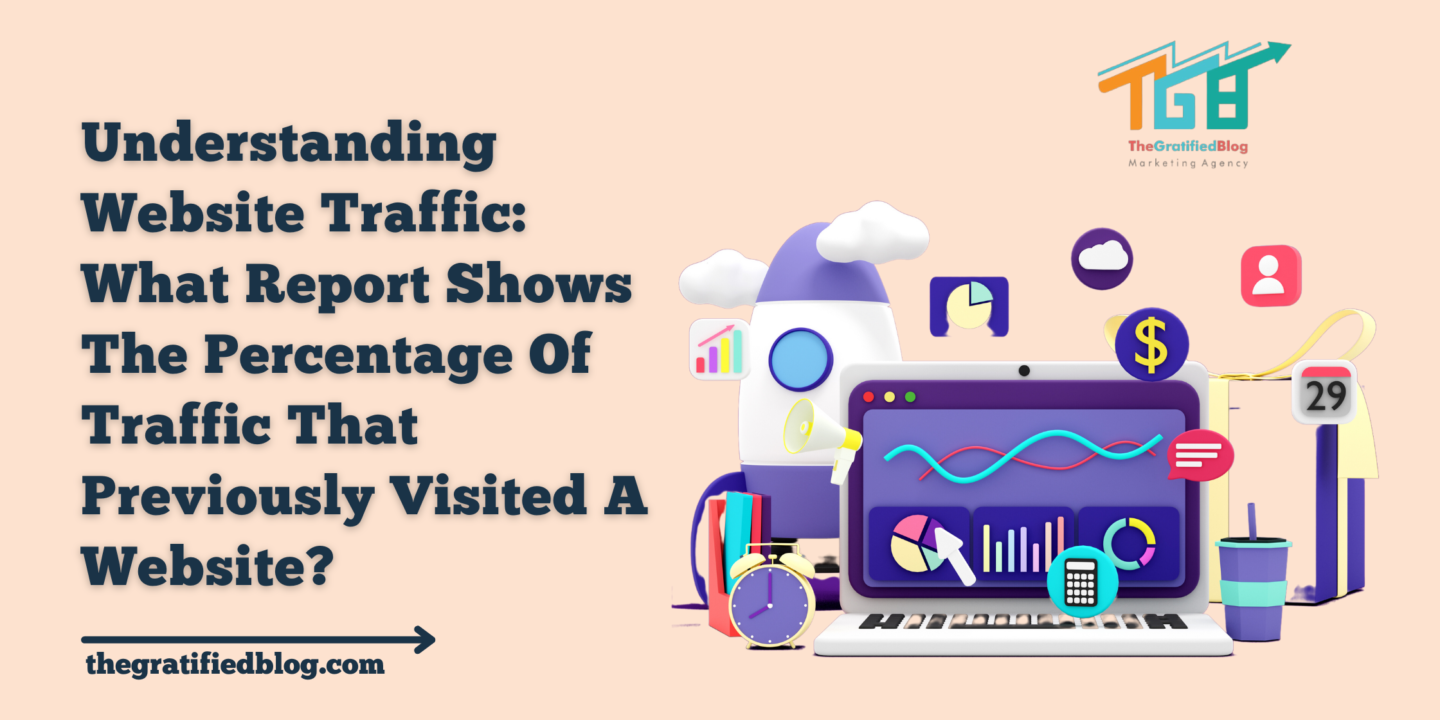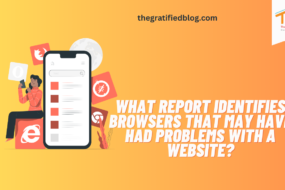
One might ask, what report shows the percentage of traffic that previously visited a website? And in the context of understanding returning visitors, this is crucial.
Returning visitors are like the regulars at your favorite local café. These set of people, including you, intentionally revisit the cafe because you like what they offer.
On the internet, returning visitors are people who keep revisiting your website because they find it valuable.
For SaaS businesses, these returning visitors can be a goldmine, bringing in more engagement, better chances of people using your services, and loyalty to your brand.
In this article, We’ll explore the importance of tracking returning visitors, what report reveals the percentage of returning visitors, and the strategies to employ in boosting your return visitor count.
The Significance Of Tracking Returning Visitors
The importance of monitoring returning visitors is underscored by various reasons, and here are some of them.
- Customer Loyalty: When visitors return to your website, it’s a vital sign of loyalty. It means they find value in your content, products, or services. This loyalty can lead to repeat purchases and recommendations to others, boosting your business.
- Conversion Improvement: Returning visitors often have a higher conversion rate. They’re more familiar with your brand and offerings, making them more likely to take desired actions, such as signing up, purchasing, or filling out a contact form.
- Cost Efficiency: Acquiring new visitors can be costly, involving marketing expenses. Tracking returning visitors is cost-efficient because you’re nurturing an existing audience rather than constantly chasing new prospects.
- Feedback Loop: Monitoring returning visitors allows you to gather feedback. If they’re not producing, it may signal issues with your website, content, or user experience that need addressing. This data helps you make informed improvements.
- Brand Advocacy: Returning visitors can become brand advocates. They’re more inclined to share your content or recommend your products to others, contributing to organic growth and expanding your reach.
- Long-Term Growth: Consistently increasing the percentage of returning visitors contributes to long-term growth. These visitors can become the backbone of your online presence, ensuring stability and sustainability.

What Report Shows The Percentage Of Traffic That Previously Visited A Website?
The report you need for tracking returning visitors is often called the “Visitor Loyalty” or “Visitor Frequency” report in web analytics tools. It distinguishes between two critical categories of visitors: “New Visitors” and “Returning Visitors.”
You can typically find the Visitor Loyalty report in your analytics dashboard’s audience or visitor section. It displays the percentage of returning visitors over a specific time frame, often compared to the percentage of new visitors.
Increasing percentages indicate growing user loyalty, while stagnant or decreasing percentages may suggest engagement or content quality issues. We will delve more into this in the next section.
How To Interpret Visitor Frequency Report?
Interpreting the Visitor Frequency Report is essential for understanding user engagement and loyalty on your website.
Here’s how:
- Percentage of Returning Visitors: The primary focus of this report is the percentage of returning visitors compared to new visitors. A higher percentage of returning visitors suggests that your website has a loyal audience who find value in your content and return for more. Conversely, a lower percentage may indicate a need to improve user retention strategies.
- Trends Over Time: Examine how the percentage of returning visitors changes over different periods, such as days, weeks, or months. An increasing trend indicates improving user loyalty, while a decreasing trend may signify declining engagement.
- First-Time Returning Visitors vs. Regular Returning Visitors: Differentiate between first-time returning visitors (those who return once) and regular returning visitors (those who return multiple times). A high percentage of regular returning visitors suggests a dedicated audience, while a surge in first-time returning visitors could result from marketing campaigns.
- Seasonal Variations: Look for seasonal patterns or spikes in returning visitors. This could be due to specific events, promotions, or trends. Understanding these variations can help you plan future marketing efforts more effectively.
- Visitor Loyalty Segmentation: Segment your audience based on their loyalty level. You can group visitors into three categories– those with Low Loyalty who visit infrequently, those with Medium Loyalty who come back now and then, and those with High Loyalty who frequently return. This breakdown gives a more detailed representation of your audience.
- Conversion Rates: Analyze the correlation between returning visitors and conversion rates. If you notice that returning visitors have higher conversion rates, it’s a sign that your content resonates with your audience, leading to more successful outcomes.
- Content Performance: Assess which types of content or pages attract the most returning visitors. Identify the topics or formats that resonate most with your audience, allowing you to tailor your content strategy accordingly.
- Retention Strategies: Based on your findings, develop and refine user retention strategies. For example, if returning visitors drop off after a certain point, consider implementing strategies to keep them engaged, such as email marketing, personalized content, or loyalty programs.
Tools To Track Percentage of Traffic That Previously Visited A Website
In today’s digital age, knowing what report shows the percentage of traffic that previously visited a website? Is crucial. Here are tools designed to help:
Google Analytics
Google Analytics is a popular analytics platform that offers a section dedicated to exploring the habits of returning visitors. There, you can find many vital figures like the number of people who continuously visit the website, what they do when they return, and how often they return. Additionally, Google Analytics allows you to dive deeper by applying filters and slicing the data by different criteria for more thorough analysis.
Heap Analytics
Heap Analytics offers a unique approach to tracking returning visitors by capturing every interaction users have on your website. This tool allows you to analyze user behavior retroactively, making identifying patterns and trends among returning visitors easy. Heap Analytics also offers cohort analysis for in-depth user segmentation.
Woopra
Woopra is a customer analytics platform that provides real-time tracking of user interactions. It offers a “Retention Analytics” feature that focuses on understanding how well you retain your users, including returning visitors. You can view retention cohorts, analyze user journeys, and set up automated email campaigns to re-engage returning visitors.
10 Strategies To Increase Percentage Of Traffic That Previously Visited A Website
The first step is to know what report reveals the percentage of returning visitors. Now, you need to know how to boost this percentage. Follow these steps:
- High-Quality Content
The key is to create content that appeals to your target market, whether it be through informative articles, in-depth lessons, or captivating videos. High-quality shared and bookmarked content improves the probability that visitors will return for more. Your return visitor count will automatically rise due to the value and relevancy of your material if you always strive to be the go-to resource for knowledge or solutions in your area.
- Regular Content Updates
Retaining and increasing returning visitors involves more than just creating great content; it also entails keeping that content fresh and up to date-. Regularly revisit your articles, blog posts, or resources to ensure they remain relevant and accurate. This practice maintains your website’s reputation for reliable information and encourages users to revisit your site.
- User-Friendly Website
Your website’s user-friendliness plays a significant role in encouraging returning visitors. An easy-to-use website with a quick load time and a neat style improves user experience overall. Visitors are more likely to return in the future when they can quickly locate what they’re seeking without difficulty or misunderstanding. Conversely, a sluggish or poorly designed website may discourage visitors from returning.
- Introduce Email Marketing
A robust email marketing strategy can be a powerful tool for nurturing returning visitors. You create a direct line of communication by encouraging website visitors to subscribe to your email list. Send regular newsletters, updates, and personalized recommendations to keep your subscribers engaged and informed. Personalization is critical in these emails, ensuring your messages resonate with individual interests and preferences and strengthening the bond between your website and visitors.
- Social Media Engagement
Engaging with your audience on social media platforms can drive returning visitors to your website. Share your content, respond to comments and messages, and create discussions around relevant topics. This engagement increases your brand’s visibility and encourages social sharing. When users find your content valuable and shareable, it can reach a broader audience, driving more traffic to your website.
By fostering a sense of community and conversation on your social channels, you also create an ongoing connection that motivates users to return for more discussions and insights. The best option is to add videos to your website that engage your visitors and drive more traffic. You can do it by opting to embed YouTube channel on website, this gives your website a major SEO boost and generates traffic.
- Invest In Community Building
Building a niche community around your brand or website can significantly impact returning visitor rates. Create forums, discussion boards, or social networks where your audience may interact and exchange stories about your products or content. Users may communicate with like-minded people in these communal spaces and feel a feeling of belonging. They are more likely to return frequently to participate in debates, get advice, or impart their expertise as they become more deeply involved in your community. Building a solid community increases returning visitors and enhances brand loyalty and trust.
- Take Personalization To The Next Level
Leveraging data analytics to personalize user experiences on your website can be a potent strategy for increasing returning visitors. You can track user behavior and preferences by recommending content, products, or services that align with each visitor’s interests. This tailored approach ensures visitors see content and offerings that resonate with their needs, increasing the likelihood of return visits.
- Offer Exclusive Content
Offering exclusive content or benefits to registered users or subscribers can be a compelling incentive for returning visits. Create a sense of exclusivity by providing access to premium content, special promotions, or member-only resources. When visitors perceive added value in becoming registered users or subscribers, they are more likely to return to your site to access these exclusive offerings. This strategy not only increases returning visitors but also builds a community of loyal users who appreciate your website’s unique benefits to its members.
- Remarketing Campaigns
Implementing remarketing campaigns through online advertising platforms effectively brings back visitors who have previously interacted with your website. With remarketing, you can target ads specifically to users who have visited your site or specific pages. These targeted ads serve as reminders, encouraging past visitors to return to your website. Remarketing can be particularly useful for promoting special offers, new content, or products. By strategically re-engaging visitors who have shown interest in your website in the past, you can increase the likelihood of them returning for further exploration or conversion. Effective remarketing campaigns leverage the power of personalized messaging and tailored offers to rekindle the interest of previous visitors, ultimately boosting visitor rates and conversion opportunities.
- Feedback and Surveys
Collecting feedback and insights from your audience can help you better understand their needs and preferences. Implement feedback forms, surveys, or user interviews to gather valuable input. Use this information to customize your content and enhance the user experience. Visitors are more inclined to return to your website if they realize you actively consider their suggestions and implement adjustments that benefit the site. This practice boosts repeat visits and solidifies the bond between your website’s audience and visitors, proving your dedication to offering a user-centric experience.
Conclusion
Understanding and catering to repeat visitors is fundamental for growing a dedicated website audience. What report shows the percentage of traffic that previously visited a website? You can gauge the health of your returning visitor rates. To ensure a consistent return rate, focus on quality content, user experience, active social media engagement, community building, and other mentioned strategies. To track the percentage of returning visitors, utilize specialized reports such as the “Visitor Loyalty” or “Visitor Frequency” report available in web analytics tools. These reports distinguish between new and returning visitors, providing valuable insights into user loyalty and engagement over time.
To increase the percentage of returning visitors, consistently produce high-quality content that addresses audience needs, maintain a user-friendly website, implement effective email marketing campaigns, actively engage on social media, and foster a sense of community around your brand.
Personalization, offering exclusive content, collecting feedback, leveraging remarketing campaigns, collaborating with influencers, ensuring a mobile-optimized experience, maintaining consistent branding, and incorporating interactive content into your strategy are all powerful tools at your disposal.








No Comments